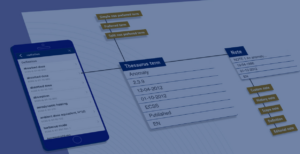Occasionally called “NoOps”, this is commonly seen in technology companies with a single, primary digital product, like Facebook or Netflix. This can even take the form of “you build it, you run it”, with the same individuals developing and operating applications. The responsibility of a DevOps architect is to analyse existing software development processes and create an optimized DevOps CI/CD pipeline to rapidly build and deliver software. The architect analyses existing processes and implement best practices to streamline and automate processes using the right tools and technologies. In addition, he monitors and manages technical operations, collaborates with dev and ops, and offers support when required. When it comes to the DevOps team structure, the release manager holds one of the most demanding and stressful roles.
DevOps is definitely NOT about hiring an army of pipeline monkeys or AWS-certified experts. It means making socio-technical changes to your organization so that it can fulfill the DevOps promise of delivering software quickly and safely. You can only assess their current state relative to how things were before. If an organization achieves these goals, it’s irrelevant that it looks like an anti-pattern from the outside.
DevOps roles: DevOps Engineer
By implementing organization-wide tools and processes and continuously monitoring progress, organizations can ensure ongoing improvement at the organizational level. Another key aspect of scaling DevOps is adopting organization-wide tools and processes. This may include shared CI/CD pipelines, container orchestration platforms, or a unified monitoring and logging solution. By standardizing tools and processes across teams, organizations can ensure consistency and streamline collaboration.
Place high importance on communication, as well as project and change management, to share this vital IT knowledge with other members of the team. DevOps teams comprise professionals from development, quality, security, and the operations segment. As the core responsibility of the team would be on the person who owns the DevOps team, a senior person from the organization would be an ideal person to lead the team, referred to as a DevOps Evangelist. The DevOps evangelist will ensure that the responsibilities of DevOps processes are assigned to the right people. The smallest DevOps team should comprise the following people; A software developer/tester, automation engineer/automation expert, quality assurance professional, security engineer, and release manager. The granularity of the team ultimately depends on the size of the organization.
DevOps IT Org Chart
Security, network, and data center management teams usually sit together on this task to prepare a cloud migration framework with well-written documentation. At this stage, a cross-functional DevOps team is formed with members from IT, operations, security, finance, and management that share the common responsibilities of DevOps to implement the cloud migration framework. When it comes to DevOps responsibilities, a DevOps architect prepares the infrastructure, designs a plan, and offers guidelines to build relevant processes. The DevOps engineer implements this plan to design and automate DevOps processes using the right tool stack and infrastructure as code (IaC) techniques for the specific environment. The implementation of these tools will again be monitored by the DevOps architect across the product lifecycle.
A DevOps culture thrives on collaboration, communication, and shared responsibilities. In order to achieve a successful DevOps transformation, it is essential to clearly define the roles and responsibilities within the team. This section will explore the key roles and their respective responsibilities in a DevOps team. Finally, organizational leaders play a crucial role in breaking down silos. By embracing a DevOps mindset and actively promoting collaboration and shared ownership, leaders can help create an environment in which teams can thrive. Once the DevOps roles and responsibilities are clearly defined, organizations can move toward implementing DevOps teams.
Using DevOps PATHS
Before implementing a DevOps team, it’s important to have a clear understanding of your current development and operations practices. According to Jez Humble, co-author of “Continuous Delivery” (2010), “The first step is to create a value stream map, which is a visualization of the flow of work through your organization, from concept to cash.” Operations engineers are responsible for managing the infrastructure that supports an application, devops organization structure monitoring its performance, and collaborating with developers to optimize deployments. We will discuss how the Spotify Model fosters collaboration, autonomy, and a shared sense of purpose, making it an exemplary case study for organizations looking to adopt DevOps practices. This team structure assumes a tight integration between the Dev and Ops teams. They act as a united front, with shared goals and unified product vision.
By identifying bottlenecks and areas for improvement in your current processes, you can establish a solid foundation for your DevOps transformation. A DevOps culture is one where collaboration, continuous improvement, and shared responsibility are valued and nurtured across the entire organization. In this section, we will discuss the importance of building a DevOps culture and the steps necessary to achieve it. Only when an SRE-team approves certain changes and development modules, the product can move on to Operations.
Cloud architect
Instead of getting caught in the buzzword, it is important to look at organization-specific needs first. Create a hiring strategy based on industry trends, technological analysis, and business requirements. Prepare a structured process management system with a streamlined interview process and onboard mechanisms, and execute it to hire the right people for the right jobs, at the right time. Similarly, cloud architecture is about creating a cloud platform by integrating individual technologies. It is not just abstracting hardware capabilities but also involves other processes such as automation, orchestration, APIs, containerization, security, routing, UX design, etc. Public, private, hybrid, and multi-cloud are a few examples of popular cloud architectures.
The key to DevOps functioning at optimal levels is engendering a culture of communication where teams can coordinate among themselves and with other teams effortlessly. To break down DevOps team silos requires leadership at all levels. Start by asking each group to surface the major areas of friction and then identify leaders in each group – dev, ops, security, test.
Quality Assurance (QA) in Software Testing: QA Views & Best Practices
Implementing DevOps teams within your organization can lead to significant improvements in collaboration, efficiency, and innovation. Implementing a DevOps team is not a one-time event; it requires continuous assessment and improvement. John Willis, co-author of “The DevOps Handbook” (2016), advises that “organizations should establish a culture of learning and experimentation, allowing teams to iterate and improve their processes over time.”
- Breaking down silos (section 4.2) is a critical aspect of establishing a DevOps culture, as it enables teams to work together effectively and share knowledge.
- Just be sure that you understand what is and what isn’t working as well as why.
- Seamless collaboration and engagement help everyone not only to be motivated but align with organizational objectives.
- Containerization allows for easier implementation into current features as well as simpler rollbacks.
- Quality assurance engineers play a crucial role in ensuring that applications are built to meet specified functionality and performance requirements.
- They act as a united front, with shared goals and unified product vision.
Scaling DevOps across the organization also necessitates promoting a DevOps mindset throughout the company. This involves fostering a culture that embraces collaboration, experimentation, and learning from failure. Team members should be encouraged to proactively seek opportunities for improvement and work together to achieve common goals. Scaling DevOps effectively requires a strong emphasis on collaboration and knowledge sharing. This can be facilitated through regular meetings, workshops, or internal conferences that bring teams together to discuss challenges, share successes, and learn from each other.
Ultimate Guide for Learning A DevOps Organization Structure
Keep in mind, the team structures below take different forms depending on the size and maturity of a company. In reality, a combination of more than one structure, or one structure transforming into another, is often the best approach. As DevOps becomes more widespread, we often hear software teams are now DevOps teams.

